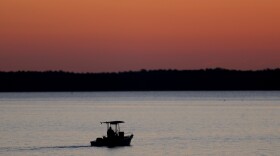Virginia is celebrating a 20 year experiment off the Eastern Shore – the restoration of vast seagrass meadows where marine animals live.
It’s the largest project of its kind in the world, offering benefits on many fronts.
A hundred years ago, fishermen off Virginia’s Eastern Shore moved over acres and acres of seagrass meadows – the tall green plants helping to protect the land from storms, but a disease destroyed that ecosystem – leaving sandy bottoms where nothing grew.
“There was a pandemic disease back in the 1930’s that pretty much decimated seagrass meadows throughout the world," says Karen McGlathery, a coastal ecologist and professor at the University of Virginia. "In many places they recovered, but they never did recover in Virginia until we started restoring them.”
UVa, the Nature Conservancy and the Virginia Institute for Marine Science teamed up to harvest, store and spread millions of seeds across 500 acres. Nature took it from there – spreading grasses over 9,000 acres.
“This is really seen as the most successful and largest seagrass restoration in the world, so it is a kind of blueprint for other areas and other organizations to follow,” McGlathery says.
And that has meant good things for the environment.

“The seagrass meadows make the water clearer. They remove nitrogen, so they make the water cleaner," McGalthery explains. "One of the big things that we’ve worked on is the role of seagrass in taking carbon dioxide out of the atmosphere and burying it in their soils for decades.”
In other words, these meadows are helping to reduce climate change, while providing a home to millions of animals from sea horses to sand sharks.
McGlathery reports seeing crabs and clams, adding that "there’s work being done to re-seed seagrass meadows with scallops.”
The restoration was supported, in part, by the National Science Foundation and the work of hundreds of students.
This report, provided by Virginia Public Radio, was made possible with support from the Virginia Education Association.




